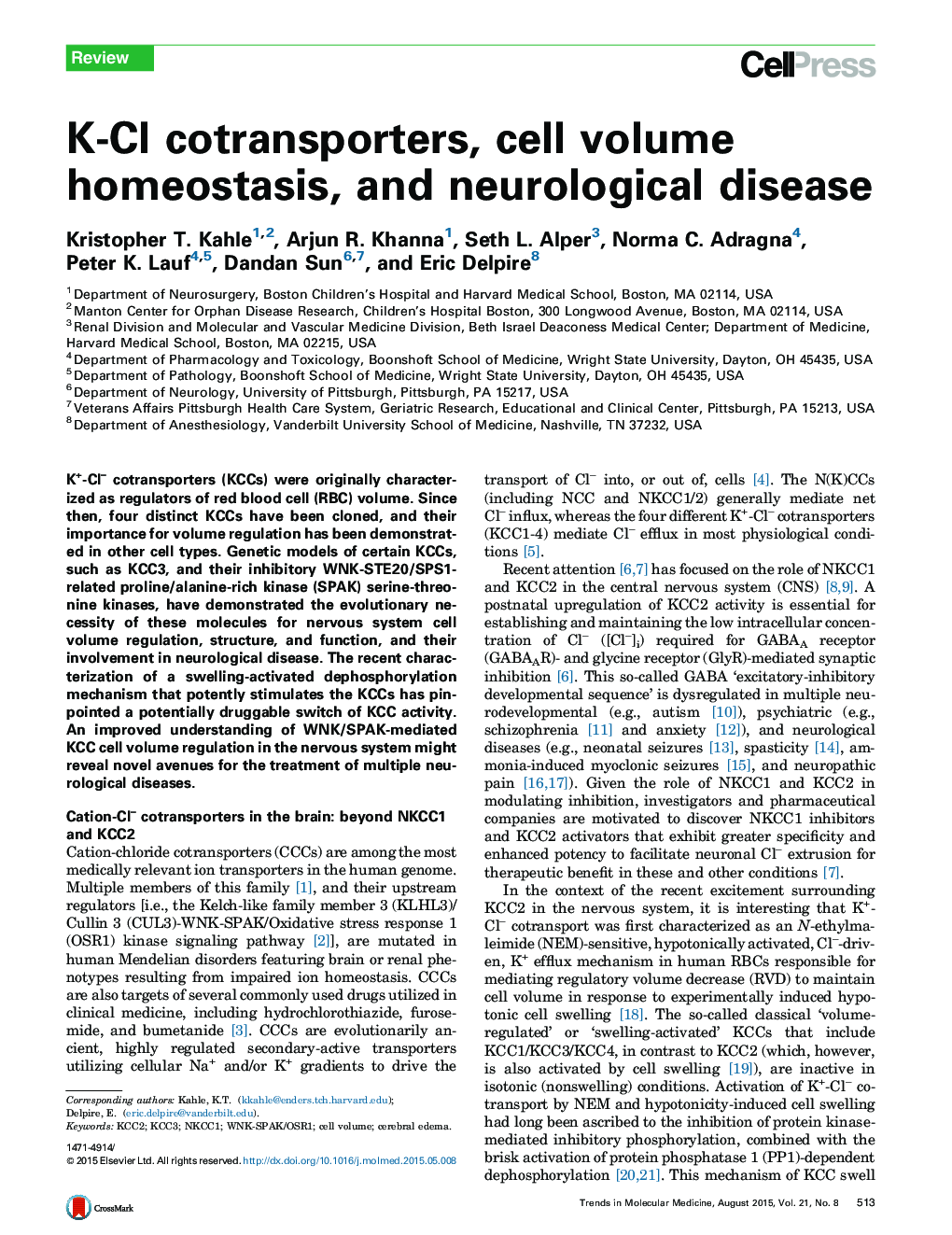| Article ID | Journal | Published Year | Pages | File Type |
|---|---|---|---|---|
| 2838388 | Trends in Molecular Medicine | 2015 | 11 Pages |
•KCCs have roles in the nervous system beyond modulating GABAergic signaling.•KCCs regulate nervous system cell volume, and are mutated in neurological disease.•WNK-SPAK kinases modulate volume-sensitive KCC activity.•Antagonizing WNK-SPAK-mediated KCC phosphorylation may hold therapeutic promise.
K+-Cl– cotransporters (KCCs) were originally characterized as regulators of red blood cell (RBC) volume. Since then, four distinct KCCs have been cloned, and their importance for volume regulation has been demonstrated in other cell types. Genetic models of certain KCCs, such as KCC3, and their inhibitory WNK-STE20/SPS1-related proline/alanine-rich kinase (SPAK) serine-threonine kinases, have demonstrated the evolutionary necessity of these molecules for nervous system cell volume regulation, structure, and function, and their involvement in neurological disease. The recent characterization of a swelling-activated dephosphorylation mechanism that potently stimulates the KCCs has pinpointed a potentially druggable switch of KCC activity. An improved understanding of WNK/SPAK-mediated KCC cell volume regulation in the nervous system might reveal novel avenues for the treatment of multiple neurological diseases.
